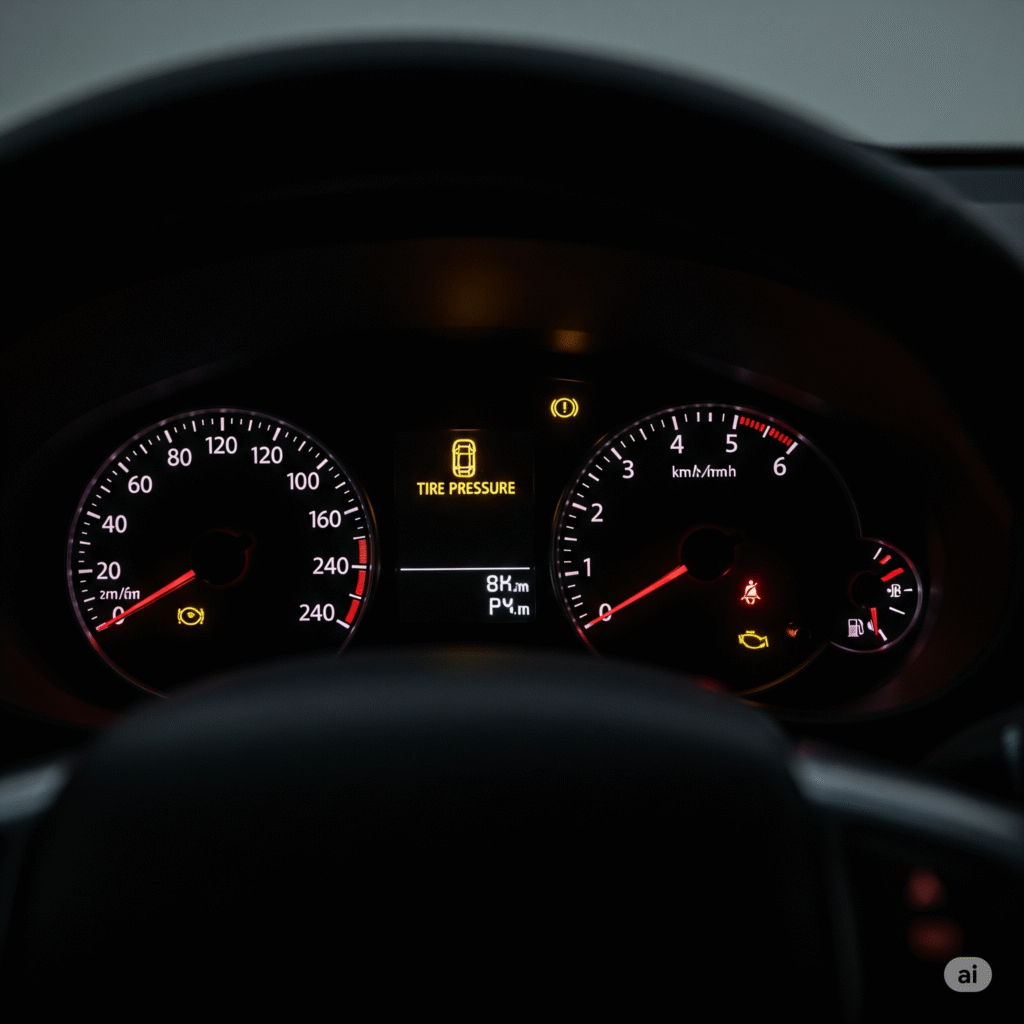
Okay, that sounds dramatic, but hear me out. Every year, about 11,000 car crashes happen because of tire problems. Most of these could be prevented by something super simple: checking your tire pressure. Yet most people ignore their tires until they go flat or blow out on the highway. Big mistake.
Why Tire Pressure Actually Matters
Think of your tires like balloons. When a balloon doesn’t have enough air, it gets squishy and weird-shaped, right? Same thing happens with your tires. When they’re low on air, they get hot, wear out fast, and can even explode while you’re driving.
Here’s the scary part: if your tire pressure drops just 20% below what it should be, your tire could blow out at highway speed. That’s not a flat tire – that’s a full-on explosion that can make you lose control of your car instantly.
The science is actually pretty cool. Your tires are designed to carry your car’s weight in a specific way. When there’s not enough air, more of the tire touches the road, which creates heat. Too much heat = boom. It’s like bending a paperclip back and forth until it breaks.
It’s Costing You Money (Lots of It)
Bad tire pressure doesn’t just risk your safety – it’s literally stealing money from your wallet. For every 1 PSI (that’s how we measure tire pressure) your tires are low, your gas mileage drops by about 0.3%. That might not sound like much, but it adds up fast.
Let’s say you drive 12,000 miles a year and your tires are 10 PSI low (which is pretty common). You’re wasting about $150 extra on gas every year. That’s money you could spend on literally anything else.
But wait, there’s more. Under-inflated tires wear out 25% faster than properly inflated ones. A good set of tires costs $800-1,500, so you’re basically throwing away $200-375 every time you buy tires. Ouch.
Over-inflated tires have their own problems. They wear out in the middle and give you less grip on the road. It’s like trying to stop on ice skates instead of sneakers.
The Temperature Thing Nobody Tells You
Here’s something that’ll blow your mind: your tire pressure changes with the weather. For every 10 degrees the temperature drops, your tires lose about 1-2 PSI. So those tires you checked in your warm garage? They could be dangerously low by the time you hit the cold highway.
In winter, this is a huge problem. A tire that’s perfect at 70°F could be 6 PSI low when it’s 20°F outside. That’s enough to put you in the danger zone.
Summer heat does the opposite – it can over-inflate your tires, making them more likely to blow out if you hit a pothole or piece of road debris.
How Your Car Feels the Difference
You know how your bike feels sluggish when the tires are low? Same thing happens with your car, but it’s way more dangerous. Under-inflated tires make your steering feel mushy and increase the distance it takes to stop. In an emergency, those extra few feet could be the difference between avoiding an accident and… not.
Over-inflated tires make your car feel bouncy and unpredictable, especially when it’s raining. The tire can’t grip the road properly because it’s not making full contact.
Your Car’s Warning System Isn’t Perfect
Most newer cars have a warning light that tells you when tire pressure is low. But here’s the catch – it doesn’t turn on until your tires are 25% low. That’s already in the danger zone!
Plus, these systems can be fooled by temperature changes or just break without warning you. The light is helpful, but it’s not a substitute for actually checking your tires.
How to Do It Right
Check your tire pressure once a month when your tires are “cold” – meaning you haven’t driven for at least 3 hours. You’ll need a tire pressure gauge (get a digital one, they’re like $10) and know what pressure your tires should be.
Here’s where people mess up: DON’T use the number on your tire. That’s the maximum pressure, not what you should actually use. The right pressure is usually on a sticker inside your driver’s door or in your owner’s manual.
Most tires should be somewhere between 30-35 PSI, but check your specific car. It matters.
Get a portable air compressor for your garage or find a gas station with free air. Some tire shops will check and fill your tires for free – take advantage of that!
The Real Talk
Look, I get it. Checking tire pressure isn’t exciting. It’s not gonna get you likes on Instagram or make your car look cooler. But it’s one of those adulting things that can literally save your life and save you money.
Your tires are the only part of your car that actually touches the road. Everything else – your brakes, your steering, your safety systems – depends on your tires working properly. And they can’t work properly without the right amount of air.
Think of it this way: you charge your phone every day because you need it to work, right? Your tires need air to work. It’s that simple.
The next time you’re at a gas station, take 5 minutes to check your tire pressure. Your wallet will thank you, and more importantly, you’ll get home safely. That’s worth way more than the few minutes it takes.